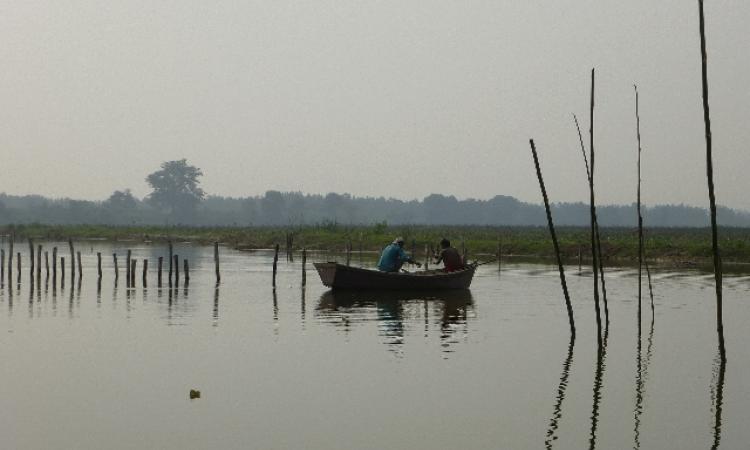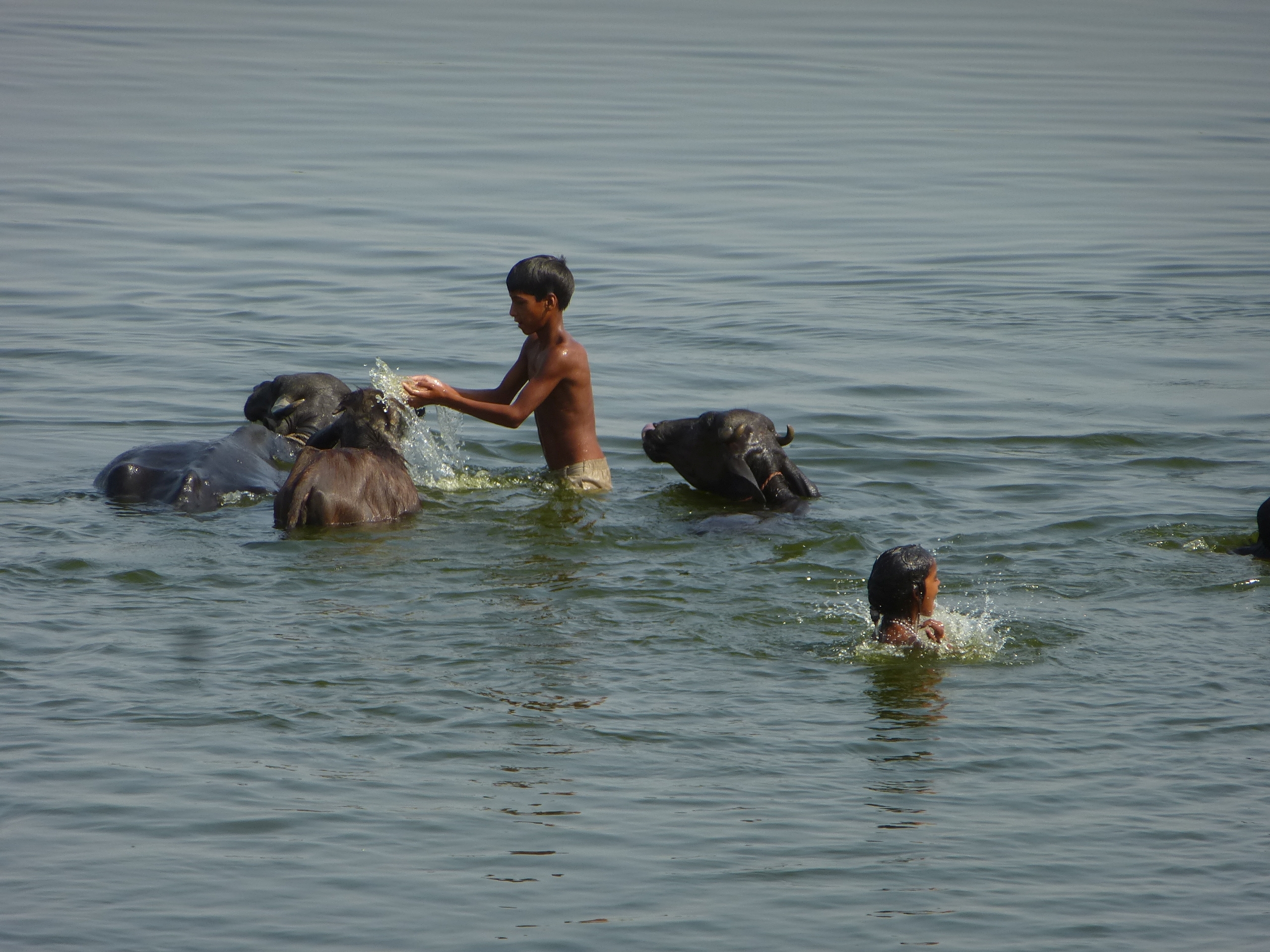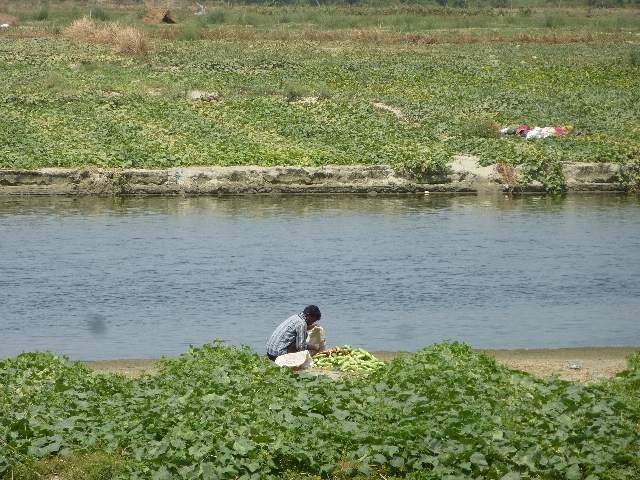
The theme for the 2016 UN World Water Day is 'Water and Jobs'. What is your opinion of the chosen theme?
We need to acknowledge that the linkage between water and livelihoods is broadbased. 'Job' denotes a paid employment and is given to someone, whereas livelihoods have evolved independently by those seeking employment. About 55% of the workforce in the country depends on farming. One of the biggest limiting factors in this sector which provides employment to over half the workforce in the country, is water. So let us not talk only of jobs, but of the life sustaining capacity of water and the ecosystem to which it belongs.
Can you explain the link between livelihoods and rivers? Any entity performs a number of functions, more so if it is an ecosystem. The functions of a river ecosystem cannot be fit into the binary of water supply and sewage disposal. Apart from riparian farming, floodplain and draw down farming, direct lifting from rivers and linked aquifers, there is the huge sector of riverine fisheries which sustains nearly 11 million people in the country. Just a small section of the Wainganga in Vidharba supports 4 lakh fisherfolk.
Any entity performs a number of functions, more so if it is an ecosystem. The functions of a river ecosystem cannot be fit into the binary of water supply and sewage disposal. Apart from riparian farming, floodplain and draw down farming, direct lifting from rivers and linked aquifers, there is the huge sector of riverine fisheries which sustains nearly 11 million people in the country. Just a small section of the Wainganga in Vidharba supports 4 lakh fisherfolk.
In a large number of cases, the fish harvested from rivers are consumed by the people themselves or sold in very small local markets. Should we discount this livelihood? Often during a river project such as a dam, they are displaced without being acknowledged as project-affected. Fishing communities form the invisible communities of a river, who do not have water rights, land rights or job security.
We need to have more administration and institutions to safeguard riverine fisheries. This does not mean the present system of auctioning fishing rights in a reservoir or river section, which is taking employment away from a community and handing to over to a contractor, thus privatising a public resource. There are several such livelihoods linked directly to a healthy river: responsible tourism, transport, ferrying, harvesting goods like nadru and singada.
In our quest for 'jobs' are we missing these inter-connections? Just because we ignore them does not mean they do not exist. We cannot ignore livelihood dependence on natural resources, and destroy them on the pretext of creating jobs.
What potential do you see for the increase of employment in the water sector?
It needs to be understood that women's contribution to farming is equal to, and in some cases, more than that of men. But they have practically no space in the planning, implementation and management of water resources, especially over irrigation infrastructure. Water resources departments in most states do not have enough human resources--they are understaffed, underpaid, and their expertise is not acknowledged. If the presence of women in these departments can be increased, it can be a game changer.
'Jalyukta Shivar' launched by the Maharashtra CM involves small water conservation works such as deepening and widening of streams, construction of cement and earthen stop dams, and digging of farm ponds. The annual budget for this is less than a single dam like Gosi Khurd. This project has not only created jobs for thousands of people but also created long term employment opportunities. Options like these with low expenditure which can provide sustainable employment to a large number of people are needed.
The repair and maintenance of minor irrigation projects is often ignored. This is needed because not only will it create jobs, but also an environment where livelihoods can flourish.
How can river conservation offer employment?
There are several successful examples in other countries of river conservation initiatives which also provide employment. I realise that the situation in India is different and we cannot import solutions but nothing should limit us from learning lessons. It is our privilege to have lessons in front of us and we need to pay attention to them.
The European Union has issued a Water Framework Directive, which aims at improving the status of all the rivers on the continent. This includes water quality, biodiversity, fisheries, navigability and ecosystems. The initiative has created thousands of jobs for both skilled and unskilled people.
Improved water quality is a result of a healthy, living ecosystem, and not a stand-alone measure.
River restoration has the option of creating livelihoods. River front development, the way it is being practiced in the country on the other hand, merely creates short term employment for contractors. There is no 'trickle down effect' either of water or of money. There is a need to move away from thrusting technocratic solutions to problems which are inherently related to ecosystems, human societies and governance. For example, the Namami Gange project which has a budget of Rs 2,037 crore for 2016-17 focuses almost exclusively on sewage treatment plants. But improved water quality is a result of a healthy, living ecosystem, and not a stand-alone measure. Ensuring a healthy riverine system can create innovative employment opportunities for a range of skilled and unskilled labour.
There is a program in the Netherlands called 'Room for the River', which is basically flood plain conservation and restoration. While this is costly, we need to think about what the costs of flood damage are. The 2015 Chennai floods resulted in losses estimated to be over Rs 20,000 crore. This gains importance in the context of climate change.
What do you see happening in this context in India?
The unfortunate observation at this point seems to be that the more money you bring into rivers, the worse off they are. This is because of a contractor and infrastructure driven approach to any problem.
Healthy functioning rivers are our biggest employment generating system.
River front development brings in money and destroys the river. We have seen this in the Sabarmati, Gomti, Godavari and others. Storm water drainage funds result in projects which directly interfere with the natural draining systems, even reducing the flood carrying capacities. Lake beautification funds interfere with floodplain-waterbody connections and groundwater recharge.
This is an alarming trend but it does not need to be so. I think the root cause is pushing infrastructure projects in the absence of ecological understanding of the river as a living system. Investment in water resources to create jobs will work if we have an ecological understanding of rives. We study hydrology, irrigation, water supply and sanitation, hydropower but do we study rivers?
The phenomenon is not limited by scale. Even small scale projects like Mini Hydels or the well intentioned Jalyukta Shivar Mission suffers from ecological illiteracy where we straighten and deepen and widen streams, calling them nallahs and even canals! This is ecologically problematical on many fronts--it accelerates erosion, affects bank stability, exposes groundwater aquifers to exploitations, reduces downstream water availability and destroys riparian habitats. Someone pays a price for that.
Hydropower is being pushed hard by our government on the pretext of clean energy and employment generation. Let us leave aside the energy part of the equation for the time being, there are many ways to approach that issue. Let us look at hydropower as an employment generating sector.
A hydroelectricity project requires labour during construction; operation of a dam does not employ many people. If we examine the nature of this employment, we see that the jobs offer neither sustainable employment nor security. The labour force is largely migrant. There is little security of insurance, benefits in a high-risk jobs or basic labour rights. As was demonstrated during the Sikkim earthquake, there is unreliable information of the number of people employed at a hydropower plant, which translates into hazy information on casualities during accidents. Our partners from Himachal tell us about projects which count the people emerging from a tunnel, and not the ones going in.
In a discussion on water and livelihoods, it will be unfair to not look at livelihoods destroyed by water resource projects. We see this destruction of livelihoods in nearly all large dams in the Himalayas to large irrigation projects in Maharashtra and Madhya Pradesh. While several large dam projects are assessed and justified based on the employment they will generate, is there a fair assessment of livelihoods destroyed to reach there or a post facto analysis of livelihoods created? Maharashtra Dam Scam stands testimony to lopsided, wilful assessment.
To sum up, healthy functioning rivers are our biggest employment generating system. Besides the livelihoods that a river supports, maintaining the health of rivers, streams and groundwater also generates jobs. Unfortunately, our budget is not looking at conservation of natural resources as a means of generating sustainable employment, MoEF is not even mentioned in the Finance Minishter's speech as an important ministry. MoEFs budget is a fraction of Maharashtra’s WRD Budget! Let us hope state budgets show a different way.
/articles/think-livelihoods-not-only-jobs